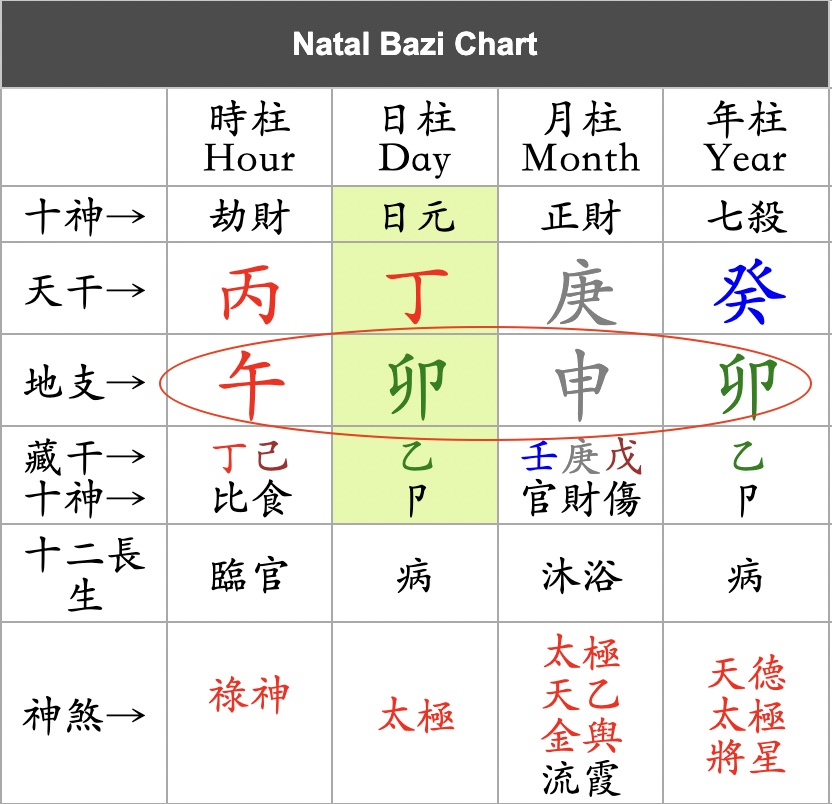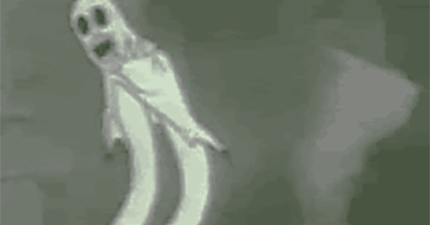Back when I was in daycare in China, all of the teachers would make us nap every afternoon. I could never fall asleep. I could barely sleep at night, much less during the day. The teachers would punish us if we moved around so I would lay there and count to a hundred over and over again. Or, I would recite the Twelve Earthly Branches.
The Twelve Earthly Branches is just a way of keeping time. If you were to tell someone to meet you in the morning, then you tell them to come out before the hour of the horse. Afternoon is just after the hour of the horse. Every Chinese hour is two 60 minute hours so horse hour is just 11 AM to 1 PM.
Here’s the Twelve Earthly Branches or 地支. Sometimes, they’re also called your 属相 or shu xiang. Not sure why. 属相 is just zodiac while 地支 is earthly branches. Probably just two different names for the same thing. Zodiac feels more colloquial while earthly branches seem more technical.
Here’s the twelve signs: 子鼠, 丑牛, 寅虎, 卯兔, 辰龙(龍), 巳蛇, 午马, 未羊, 申猴, 酉鸡, 戌狗, 亥猪.
Here’s the same thing with the animal part of each word translated: 子 rodent, 丑 cow, 寅 tiger, 卯 rabbit, 辰 dragon, 巳 snake, 午 horse, 未 sheep, 申 monkey, 酉 chicken, 戌 dog, 亥 pig.
Each branch is paired with an animal. Some of the words for the twelve branches still have meanings in modern Chinese but a lot of them actually don’t. They just refer to the unit of time. The second character in each word refers to an animal. I’ve heard different theories about where the twelve animals come from. Some people say that it came from the western zodiac because the second sign in the western zodiac, Taurus, is a cow just like the second sign in the Earthly Branches. I’m not so sure about this theory because it seems to rely only on the cow being in second place to make its point but I do believe that there was a lot of mutual influence through Persia.
Because this is a time keeping method, you need to memorize this to use it. The order of the sequence matters. If today is a dragon day, then tomorrow will be a snake day. The whole point of having any kind of time keeping method is to keep a collection of people on the same page about what time it is. It’s like how there’s twelve hours in a day. That only makes sense if you know that 2 comes after 1 and 4 comes after 3. On top of knowing the order of the branches, you have to associate these characters that don’t have much colloquial meaning with random animals because astrologers don’t use the animals to refer to the branches but the names of the branches themselves. That’s difficult.
I’m going to share with you something really stupid. I’m going to share with you the method that I came up with as a three year old for remembering the sequence of the Earthly Branches and which branches go with which animals.
A Three Year Old’s Memorization Method for the Earthly Branches
Okay, so this method is completely stupid and it only works in Mandarin. However, it does work for those who are really bad at Chinese. This is because I came up with this at the age of three. It doesn’t work if you know absolutely no Chinese at all. If you know absolutely no Chinese and want to memorize the branches, then you gotta start from scratch and just memorize the shapes and sounds or something and choose if you want them in Mandarin or Canto or something else. Or, maybe you don’t care about memorizing the branches in Mandarin and prefer to know them in Vietnamese or Korean. You can just skip this section if you don’t care about Mandarin.
My method is helpful if you know how to speak basic Mandarin but can’t read. I’ve shared it with people who don’t really know Mandarin and they memorized the sequence of the zodiac right away.
Here’s the twelve signs again: 子鼠, 丑牛, 寅虎, 卯兔, 辰龙(龍), 巳蛇, 午马, 未羊, 申猴, 酉鸡, 戌狗, 亥猪.
Here’s the same thing in pinyin: zishu, chounu, yinhu, maotu, chenlong, sishe, wuma, weiyang, shenhou, youji, xugou, haizhu.
Read the pinyin out loud to get the hang of the characters and hear what they sound like. Now, take a look at this:
The first one is easy. 子鼠 is son of rat. 子 is son so this word must be referring to the rat’s son. 丑牛 or chounu is ugly cow (丑 is actually the word for clown and not ugly but sounds the same). 寅虎 is silver tiger. 卯兔 is hairy bunny. This is easy to remember because bunnies are fuzzy. 辰龙 or chenlong is Jackie Chan. Jackie Chan’s Chinese name is Cheng Long and sounds similar. 巳蛇? Four snakes. 午马 becomes five horses. 未羊—feed the sheep and 申猴 is rising monkey. 酉鸡 is oily chicken like fried chicken. 戌狗 is Xu dog…this one won’t make sense to most people. My best friend growing up’s name is Xu and we always played a game where I pretended to be her dog. She would groom me for imaginary dog shows and make me beg. If you can remember that then you, too, can associate xu with dogs. 亥猪 is harmful pig.
Anyway, I’ll move on now. If you know Mandarin, you’ll know that all of these phonetic devices are a three year old’s mistaken understanding of the names for the branches. None of the branch names, except for son of rat, actually mean what I thought they did when I was three. Don’t take this too seriously. If it helps you remember the branches, then it helps. If it doesn’t, then you can just move on.
The Zodiac Story
Anyway, here’s a better way to remember the sequence. It’s the popular story about the twelve animals racing in a river.
An emperor called Yu had all of the animals run a race through a river to create the zodiac. The rat and the cat strategized together. As the smartest animals around, they saw talent in the cow. Even though other animals may be faster than the cow, the cow doesn’t give up and has the physical strength to ram through thick mud. That’s why the smartest pair hedged their bets on the cow.
The cow was very agreeable and let both of them sit on its back. It started early and was the first to approach the finish line. It got there through sheer persistence. However, at the last second, the rat did something horrible. It kicked the cat off of the cow, drowning it, and crawled into the cow’s ear. When the cow got to the finish line, the rat jumped off first and won the race.
The third animal to come through was the tiger. Tigers are really fast but like to sleep. The tiger actually got a little cocky and slept in. When it came across the line, it was actually surprised that it wasn’t first.
The rabbit came jumping in after that. It had worked really hard to make it over. Even though the rabbit is fast, it had to watch out for predators and it has a small size. At the last second, however, the rabbit got caught on a stone and was afraid to jump over the water to finish the race.
That’s when the dragon came. The dragon saw the little bunny there and breathed out, pushing it safely across the finish line. Then the dragon drifted across. Dragons are so fast because they can fly so everyone was wondering why the dragon came so late. In response, the dragon says that it was on its way when it saw a village that caught on fire. The dragon felt compelled to take a detour to save the village before coming back to the race.
Then, something very strange came looming from the river. A horse was running with a snake wrapped around its leg. As soon as the horse got close to the finish line, the snake jumped off. This terrified the horse, making it scream and lurch back. The snake swam to the line and then the horse finished. Like the rat and the cat, the snake decided to hitch a ride on someone. However, it bet on the wrong horse. Even though the horse is the fastest animal, it doesn’t run in a straight line. The horse went sideways, grazed a bit, and then came back. That’s why it came in seventh.
Next up was the sheep, the monkey, and the chicken together. They actually decided to collaborate and built a boat together. They all worked together to push away weed, row the boat, and look for direction. Once they arrived, they voted and decided that the sheep contributed the most so it should be eighth. The monkey contributed the second amount so it placed ninth. The chicken chose to be tenth even though it was a leader on the boat and charted the way.
Second to last was the dog. The dog got distracted because people kept wanting to play with it and feed it scraps. It didn’t really care about coming in last and was happy it made it at all. The pig came in last and was sad. It started to cry which made all of the other animals gather around it, saying that the race was no big deal and that they all got too caught up in it. That’s why the pig has the power to transform a competitive atmosphere into a congenial one.
Applying the Earthly Branches
From the story, you can see a lot of characteristics of the Twelve Earthly Branches. Sheep, monkeys, and chickens are socially collaborative but the bird is more of a leader. Some animals, like the dragon and the horse and the dog, really don’t care about placing first. Some are more ambitious.
The names of each branch also all hold a lot of meaning for how that branch moves and behaves. You can go into the etymology of every character. I was surprised to learn that, while my three year old self saw 子鼠 as son of rat, the branch actually does refer to birth and new beginnings. 子 is the name for child.
You can also observe these animals or types of animals in the world. While the stems show you a theory of self, the animal branches actually show your behaviors. Every animal type has a different set of survival strategies and habits. The people who made up this system would have been looking at different animals and thinking about how they interact with the ecologies that they live within.
I’ll do another article next where I list out each animal branch and describe them in my words. For now, I’ll show you how to look for the Earthly Branches in your natal chart.

This is another sample chart. I kept it the same chart as the one I used last time. I circled all of the Earthly Branches. You should have four since your eight character chart is made up of four stems rising four branches.
The branch in your day pillar tends to be important because it’s the one that expresses your day stem. In a way, that’s the animal you behave the most like. Here’s the same sample chart with just the day pillar branch circled:

What branch are you? Do you relate to what you know about that animal? If you’re a monkey, do you like to climb to a high tree top and observe things happening on the ground from a detached perspective? If you’re a dog, do you like to guard and protect what you hold sacred? If you’re a pig, do you like to bring people together?
You should read the day stem together with the day branch. Together, they make up your day pillar. There are ten stems and twelve branches. That makes 60 different pillars possible. Why 60 and not 120? Because yang stems can only be paired with yang branches and yin stems are paired with yin branches. Mouse, tiger, dragon, horse, monkey, and dog are yang. Cow, bunny, snake, sheep, chicken, and pig are yin. Maybe you’ll notice that we tend to eat the yin animals as food but we don’t tend to eat the yang animals. Well, except for dog.
To read the entire pillar and the whole chart, you’ll have to know about how each of the five phases in the wuxing interact with each other. I’ll go through the animal branches first and then write another article about that. That way, you can just enjoy learning the animals on their own first. I think animals are very moving so this is the really fun part about learning this stuff.


